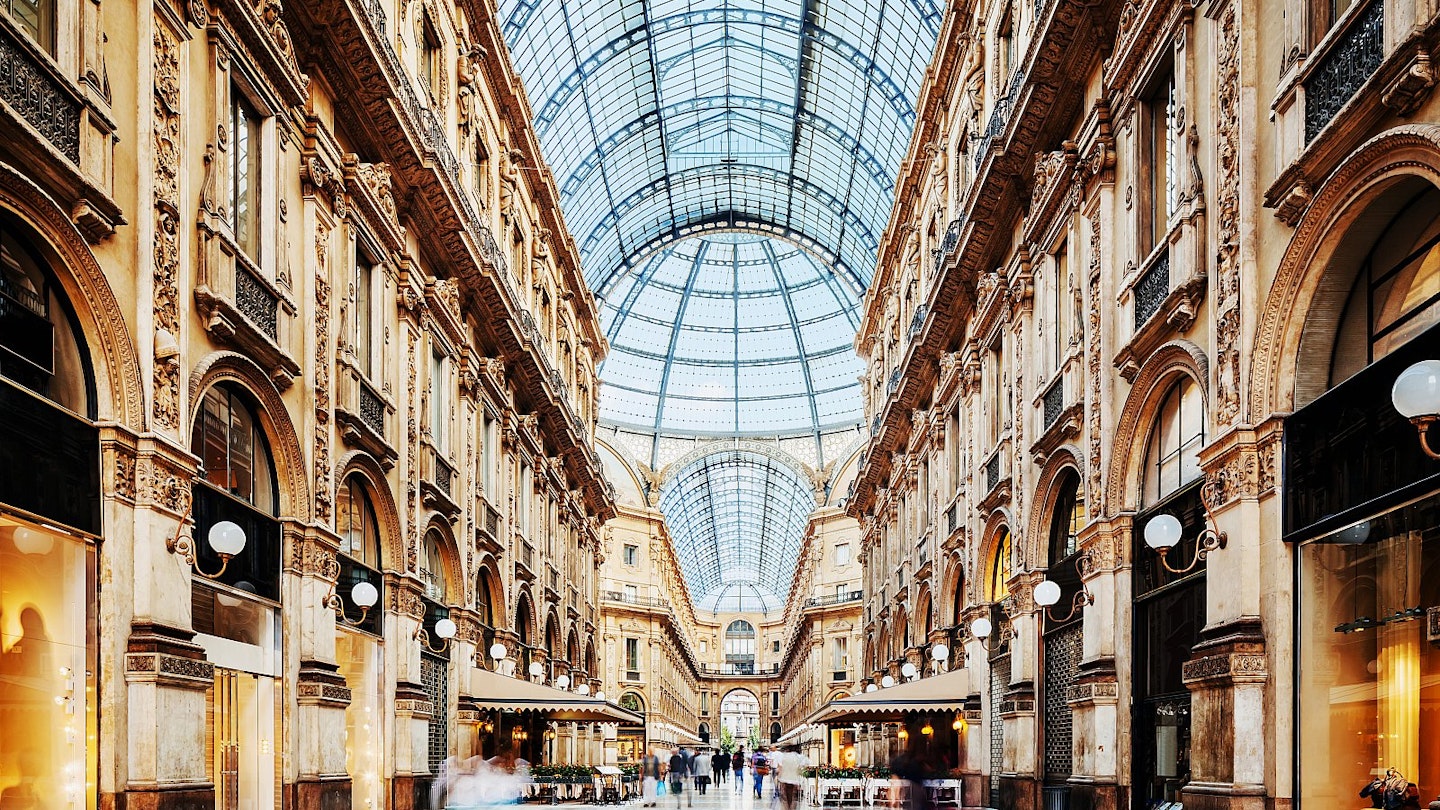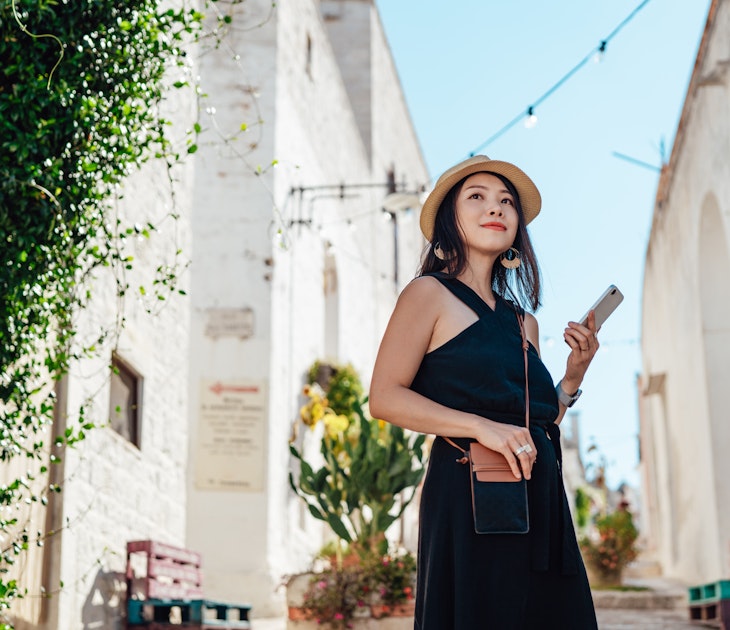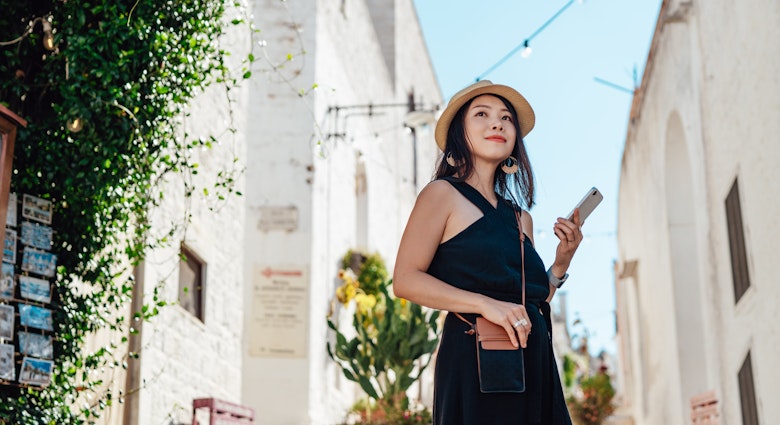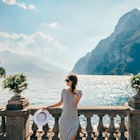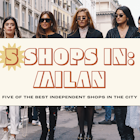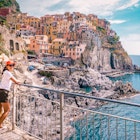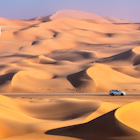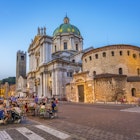Milan is the pulse-quickening proof that Italy was not cryogenically frozen six centuries ago. After all, visitors flock here not only for La Scala opening nights and Leonardo da Vinci's Last Supper, but also for spring and fall fashion weeks, chic designer showrooms and modern art fairs.
Modern Milanese are audacious, industrious daydreamers. So why not jump in and join them in their intoxicating round of pursuits, be that world-class shopping, browsing modern art galleries or downing an expertly mixed Negroni.
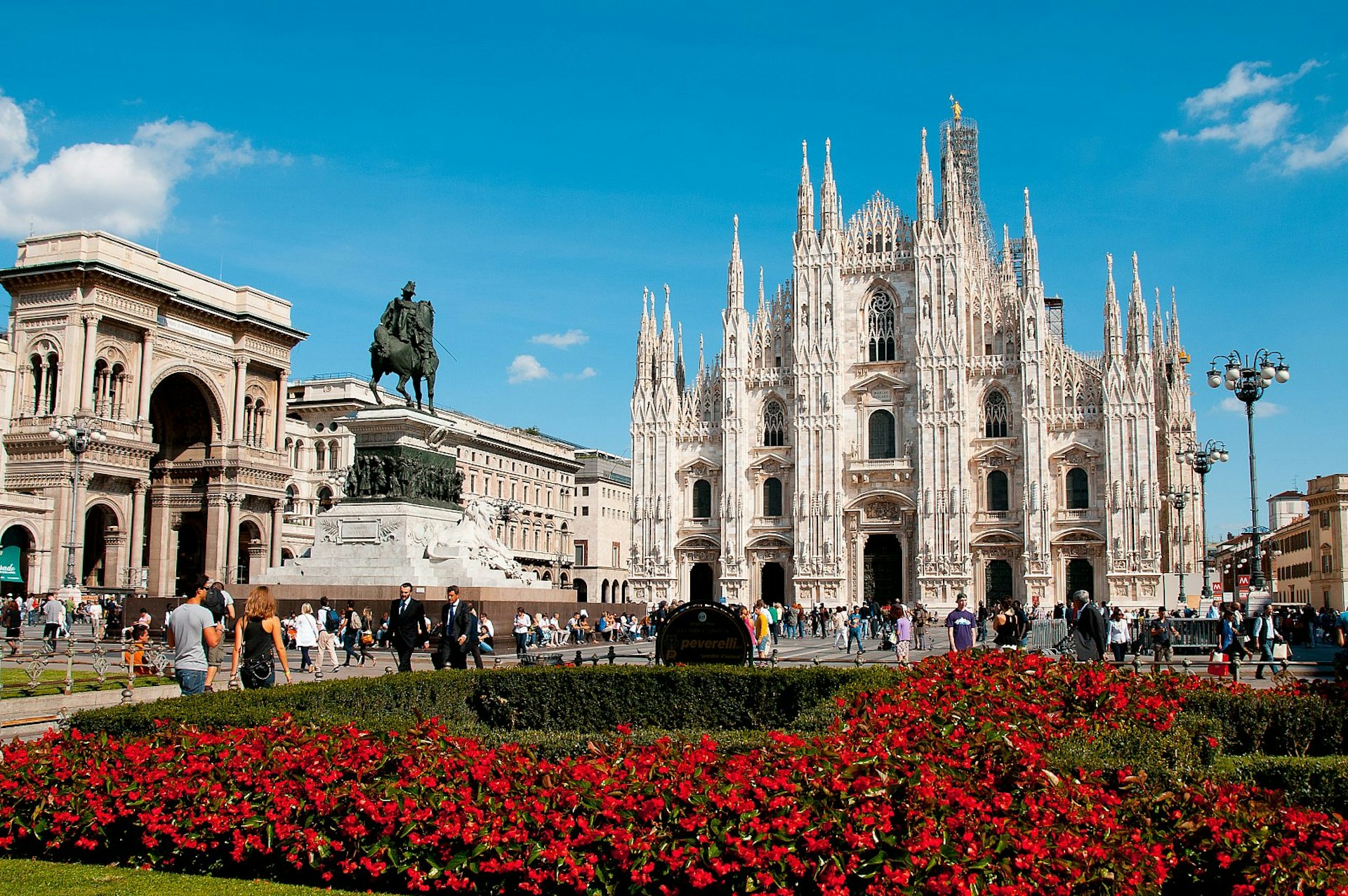
Day 1
Morning
Five hundred years in the making, Milan’s magnificent gothic cathedral sublimely dominates the city’s central piazza. No matter how many times you see it, its pearly white facade of petrified pinnacles elicits a little gasp of awe. Head up to the roof for a heavenly view of its spires and a vertigo-inducing perspective of the piazza with the Galleria Vittorio Emanuele II, Europe’s oldest shopping mall, to your right and the Royal Palace to your left.
Then swap old for new next door in Milan’s modernist showcase, the Museo del Novecento. As you rise up the spiral ramp through 20th-century neo-impressionists, futurists, surrealists and spatialists, you can trace the story of the city through fascism, two World Wars and the dawn of the technological era.
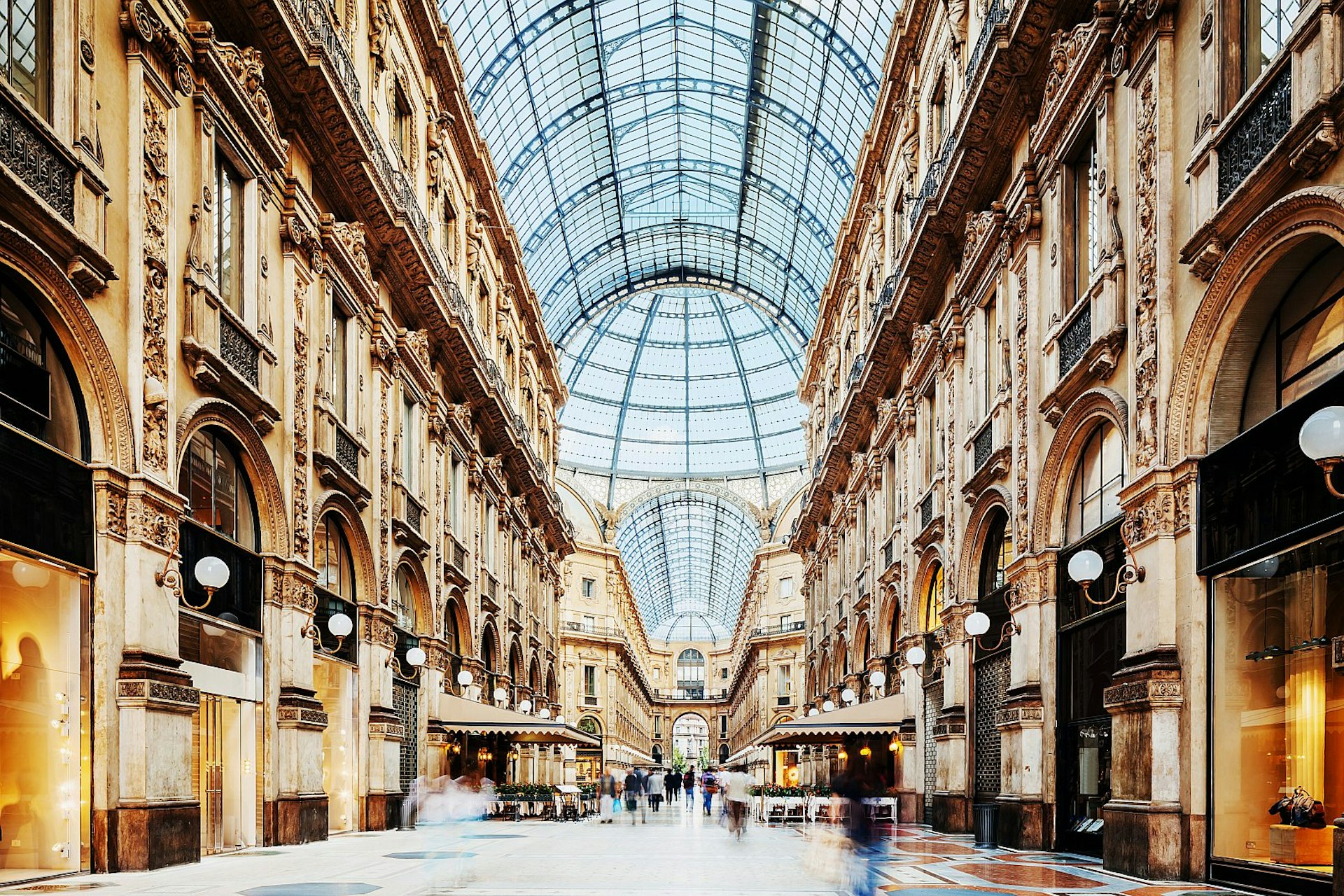
Afternoon
If you’re dazzled by the panoramic floor-to-ceiling views of the Duomo’s statuary from the Museo del Novecento, you can contemplate them further in its art deco bistro, Giacomo Arengario. But you won’t find many Milanese here outside cocktail hour. To lunch with locals wander out into the network of alleys around the Duomo. Traditionalists seeking superlative saffron risotto should head to Peck Italian Bar, the restaurant affiliated to the city’s best delicatessen. Or, if you’re feeling sociable, take a pew at the canteen tables in da Pino and order up bowls of bollito misto (mixed boiled meats).
Via Montenapoleone, or 'Montenapo', is the most famous street in Milan’s Quadrilatero d’Oro (Golden Quad). Here, between Gucci, Pucci and Prada, tomorrow’s trendsetters offer a sidewalk scene that makes Milan’s Fashion Week runways seem entirely redundant.
For those immune to the siren song of the shops, retreat to the refined interiors of Milan’s house museums: the Renaissance fantasy palace of the Bagatti Valsecchi, the historically-themed apartment of Poldi Pezzoli, and the modernist haute-bourgeoisie home of a sewing-machine tycoon, the Villa Necchi Campiglio.
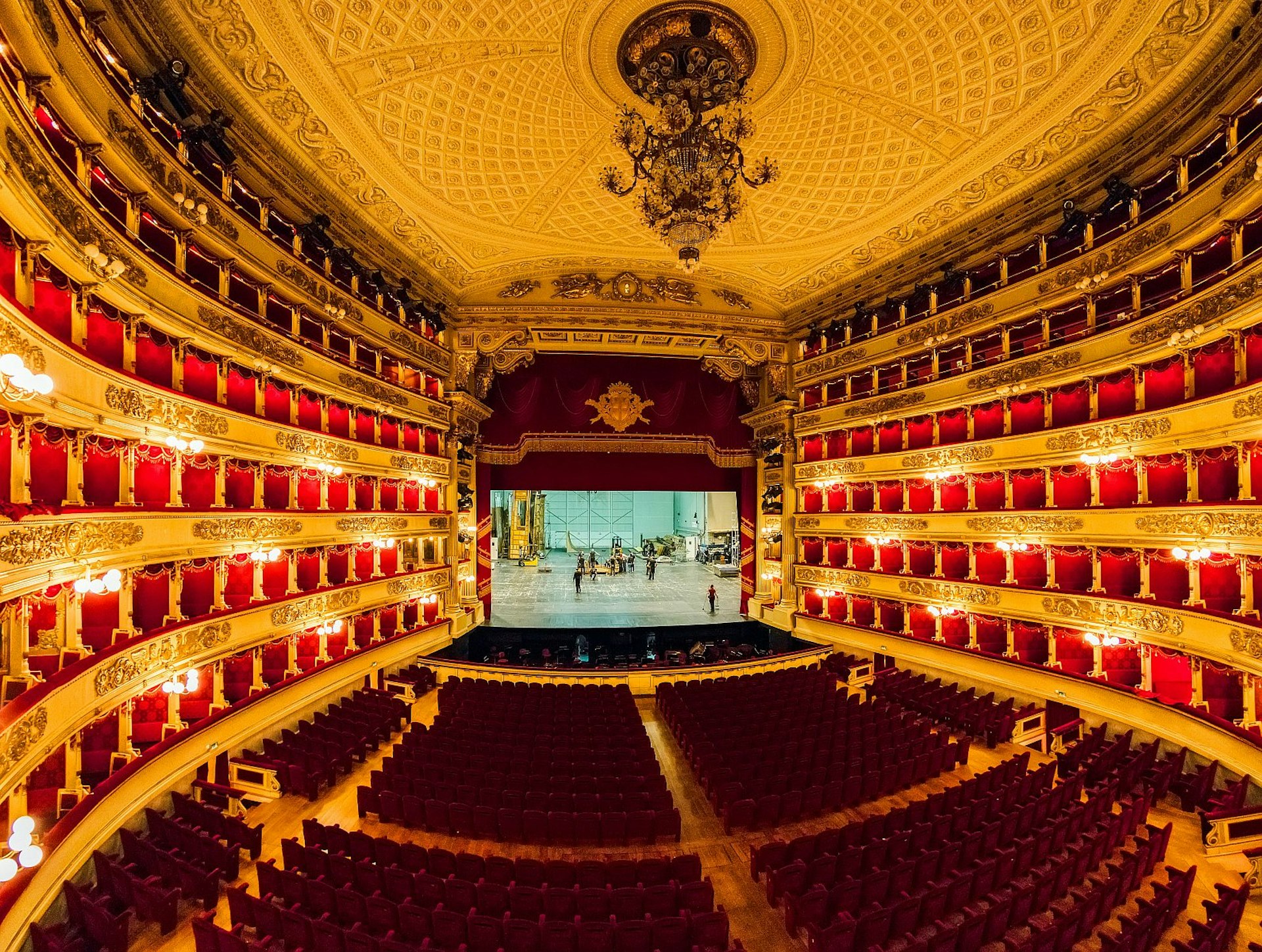
Evening
The early evening tradition of aperitivo is sacred in Milan. Come 6pm, bars all over town bring out platters of crostini, sushi, pasta, focaccia and smoked salmon. The offerings range from simple to exotic as bars compete for critical tastebuds. In the Quad, chic spots include Bar Basso, where the aperitivo concept is said to have started; the varied offering at HClub Diana; or the secluded gardens of the Bulgari Hotel.
Opera and theatre aficionados should make a beeline for La Scala’s gilt-edged palchi (private boxes) or the risk-taking little repertory theatre Piccolo Teatro. Then hipsters and cocktail fans should head to Navigli, where rowdy crowds spill out along the city’s canals. Bar-hop from Mag Café to Bar Rita and the Apollo Club.

Day 2
Morning
It’s usually da Vinci’s Last Supper or the basilica of Saint Ambrogio that draws visitors away from the Duomo, but Milan’s superlative Science Museum reminds us that Leonardo would rather have been remembered as an engineer instead of a painter. Models of his proto-helicopters, catapults and cannons are displayed here alongside halls devoted to astronomy and horology, and hangars housing steam trains, planes and full-sized galleons.
Afterwards, grab a quick coffee at Biffi or Bar Magenta and toss a coin for your next stop: the golden sky mosaic and mummy of Saint Ambrogio at the eponymous basilica, or Bernardino Luini’s heavenly frescoes in the Chiesa di San Maurizio.
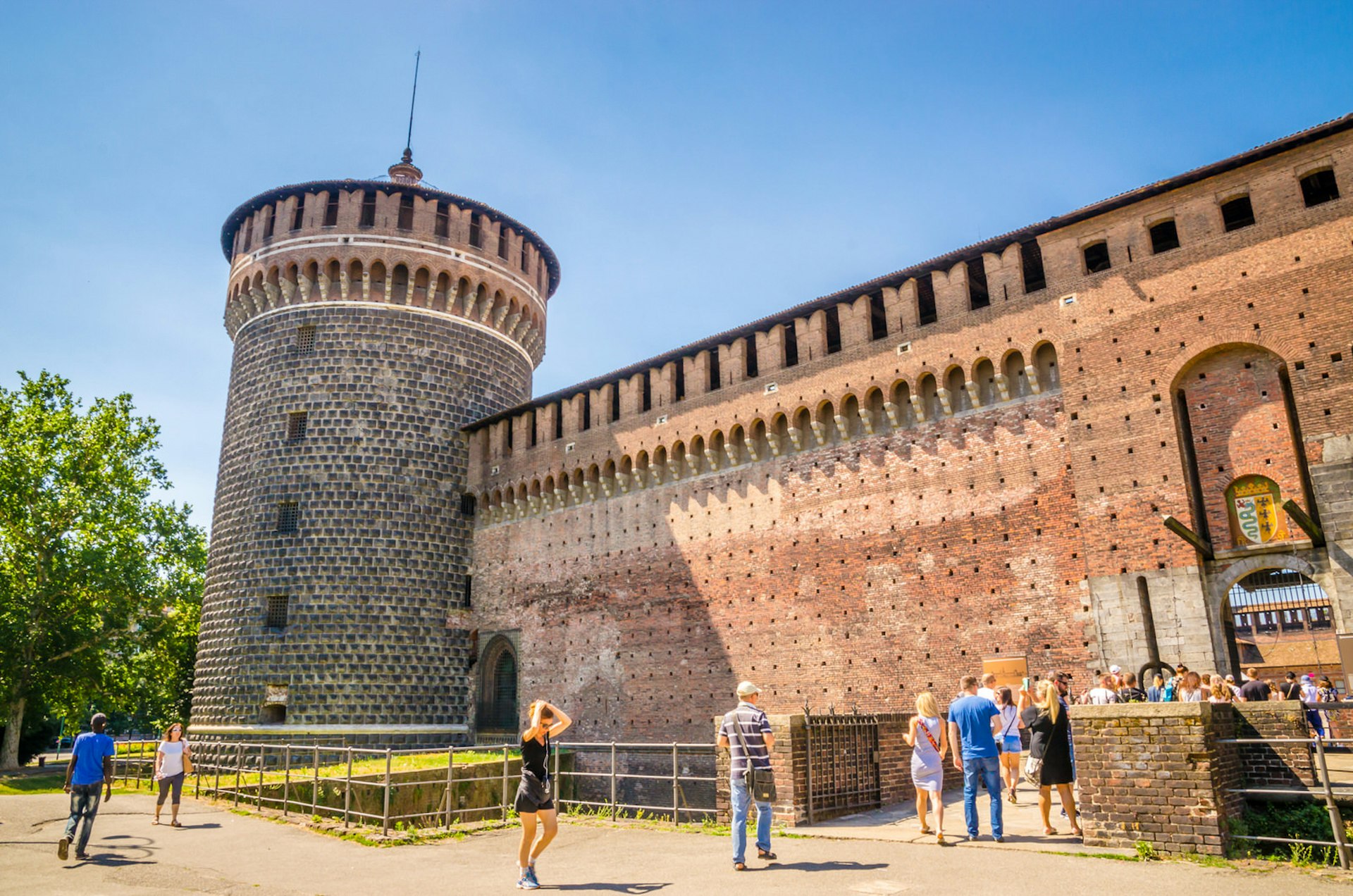
Afternoon
By now you’ll have circled the turreted Sforza castle several times. Behind it, Parco Sempione, the green lung of the city, spreads northwards to Napoleon’s ironically named Arch of Peace. The park was originally the hunting grounds of the Sforza dukes before the French mooted the idea of a public park in 1891. It was a resounding success and today Milanese of all ages come to enjoy its winding paths and shady copses. Grab a panino at one of the park bars or head to the bright white cafe of the Triennale Design Museum, which overlooks the greenery.
Wander over the masterpiece-packed halls of the Pinacoteca di Brera, Milan’s premier art gallery. You’ll be rewarded with a stunning collection of works by Bellini, Mantegna, Raphael, Titian and Caravaggio. Then enjoy a stroll through Brera’s chic, cobbled lanes.

Evening
Before you leave, you owe it to yourself to indulge in two last suppers, starting with da Vinci’s Il Cenacolo. Prebook an evening tour and you’ll be guided through air-locked rooms to the golden glow of the refectory where Christ reveals to gasping disciples that one among them will betray him. So outstandingly good was Leonardo’s composition that it swept away the efforts of even the greatest masters before him, but his choice of oil paint was flawed. With over 80% of the original colour lost and the process of deterioration irreversible this isn’t a masterpiece to miss.
Book for an elegant dinner at La Brisa then finish the night at cool rooftop bar Ceresio 7 or cosy wine bar Cantine Isola.
Getting around
By bike: The BikeMi public bike system has stations all over town.
By metro: Milan’s metro operates from around 5.30am-12.30am; a day ticket costs €4.50.
By taxi: Your best bet is going to designated ranks; or call 02 4040 or 02 6969. Uber is also a viable option, although prices are no longer as competitive and may in fact be higher than the normal taxi rate.
Like this? Try these
- 22 free things to do in Milan
- How to live like a Local in Milan
- Six of the best day trips from Milan
Article first published October 2014, and updated July 2019.

